- News
- Reviews
- Bikes
- Components
- Bar tape & grips
- Bottom brackets
- Brake & gear cables
- Brake & STI levers
- Brake pads & spares
- Brakes
- Cassettes & freewheels
- Chains
- Chainsets & chainrings
- Derailleurs - front
- Derailleurs - rear
- Forks
- Gear levers & shifters
- Groupsets
- Handlebars & extensions
- Headsets
- Hubs
- Inner tubes
- Pedals
- Quick releases & skewers
- Saddles
- Seatposts
- Stems
- Wheels
- Tyres
- Tubeless valves
- Accessories
- Accessories - misc
- Computer mounts
- Bags
- Bar ends
- Bike bags & cases
- Bottle cages
- Bottles
- Cameras
- Car racks
- Child seats
- Computers
- Glasses
- GPS units
- Helmets
- Lights - front
- Lights - rear
- Lights - sets
- Locks
- Mirrors
- Mudguards
- Racks
- Pumps & CO2 inflators
- Puncture kits
- Reflectives
- Smart watches
- Stands and racks
- Trailers
- Clothing
- Health, fitness and nutrition
- Tools and workshop
- Miscellaneous
- Buyers Guides
- Features
- Forum
- Recommends
- Podcast
review
£99.99
VERDICT:
Works really well off-road, though less useful on road, and the limited range will limit its appeal
Weight:
221g
Contact:
At road.cc every product is thoroughly tested for as long as it takes to get a proper insight into how well it works. Our reviewers are experienced cyclists that we trust to be objective. While we strive to ensure that opinions expressed are backed up by facts, reviews are by their nature an informed opinion, not a definitive verdict. We don't intentionally try to break anything (except locks) but we do try to look for weak points in any design. The overall score is not just an average of the other scores: it reflects both a product's function and value – with value determined by how a product compares with items of similar spec, quality, and price.
What the road.cc scores meanGood scores are more common than bad, because fortunately good products are more common than bad.
- Exceptional
- Excellent
- Very Good
- Good
- Quite good
- Average
- Not so good
- Poor
- Bad
- Appalling
Shimano's new Ultegra RX rear derailleur, available in both mechanical (RX800, £99.99) and electronic (RX805 Di2, £259.99) versions, reduces chain slap noise and eliminates dropped chains. It's ideal for cyclo-cross, gravel and adventure bikes where rough and bumpy terrain can easily unship an unsuspecting chain, but largely pointless on the road unless you're riding cobblestones on a regular basis.
- Pros: Quieter, less risk of dropped chains
- Cons: Extra weight, heavier mechanical shifting, uglier
If you're replacing or upgrading a rear mech anyway it could be a smart move, especially as there's little difference in the retail price. But if you've managed just fine up until now you probably still will; it's certainly no game-changing development in the same way SRAM's 1x groupsets have been for mountain, gravel and cyclo-cross bikes. It falls some way short of a dedicated gravel groupset many people were anticipating, but does indicate a growing interest from the Japanese company.
> Find your nearest dealer here
What has Shimano done exactly?
Shimano has simply implemented its Shadow Plus technology from its mountain bike groupsets into the new Ultegra RX rear mech. Shadow Plus comprises a clutch-style mechanism housed inside the slightly bulkier body of the derailleur and it's intended to increase the tension on the cage to prevent unwanted chain movement (by preventing the cage moving forwards) to stop the chain flapping about when riding over rough ground or cobbles and slapping the chainstay (noisy) and, in the worst case scenario, dropping off the chainring.
The small grey lever you can see in the photo below is to enable you to disengage the mech. This is to allow you to easily remove the wheel; trying to get the wheel out with the clutch engaged is just going to make your life harder. You could look at it as being an optional feature, turning it on and off as you see fit, but in reality you're going to leave it on all the time.
I tested both a mechanical version with a double chainring (2x) road bike and the Di2 version (below) on my custom built 1x adventure bike. I used both over several months and through lots of miles and as many different riding situations as possible.
Using the mechanical version highlights slightly heavier shifting at the lever compared with a conventional derailleur, but after the first couple of miles and dozen gear shifts you really don't notice it. Shimano has apparently reduced the tension compared to the mountain bike mechs with the same technology, but its latest mechanical shifting is so light and breezy anyway, and that doesn't change drastically with the addition of the clutch. With the Di2 version, there's absolutely no discernible difference at all.
Who is it aimed at?
All the Shimano press for the new Ultegra RX clutch derailleur talks of increasing your confidence over bumpy ground, helping you maintain cadence over the road less travelled, bringing adventure back to road riding. But it's designed primarily for 2x drivetrains (Shimano doesn't yet offer a dedicated road and gravel 1x groupset) and only accommodates up to an 11-34t cassette. Plus it was launched at Paris-Roubaix, the most roadie of roadie races.
Do you even need a clutch-style mech on a road bike? We've managed for a long time just fine, surely?
That was my first thought, and one I've grappled with during this review. I can't say noisy or dropped chains have been an issue on road bikes; in fact, I can't remember the last time I dropped a chain on a road ride. But off-road, it's a different matter: the clutch-style derailleurs have been one of the single most significant developments, along with dropper posts, in the last decade.
Where the clutch-style mechanism makes a lot of sense is on a 1x bike because removing the front mech essentially robs you of a chain retention device. With the Di2 mech fitted to a gravel and adventure bike with a single chainring, the Ultegra RX mech works nicely to prevent unwanted chain movement and minimise the risk of it dropping off.
Riding over lumpy grass tracks, horse-trodden bridleways and down rocky gulleys prove the merits of the Ultegra RX and is where the clutch mechanism comes into its own. The ride was much quieter – no chain smashing the chainstay – and definitely no dropped chains. For cyclo-cross racing too, the benefits are clear. There's less risk of the chain going AWOL when riding through a sandpit or when you remount the bike after gracefully vaulting some hurdles. So clear benefits for off-road riding then, but less appreciated on the road, in my opinion.
Limited range
The Ultegra RX rear derailleurs are compatible with Shimano's existing road dual control levers and will work with cassettes with a largest sprocket between 28-tooth and 34-tooth, and with chainsets from 46-36t up to 50-34t, with a 16-tooth maximum chainring capacity (the difference in teeth numbers between large and small chainring).
> Beginner's guide to understanding gears
They are really intended to be used with a 2x setup – Shimano is a firm believer in the benefits of the front mech still, whereas SRAM is on a mission, it seems, to wipe it out forever. There are pros and cons to a single chainring versus a double, but that's a discussion/debate/argument for another day.
On a double groupset with an 11-34t cassette, the Ultegra RX mech works as expected, much like a normal Ultegra rear mech really. However, I bravely decided to ignore Shimano's guidelines and experimented with the Ultegra RX Di2 mech paired with a single chainring and an 11-40t cassette.
Would it work? Yes! It worked just fine. Look, here's a video and everything. I should probably caveat this by saying Shimano doesn't recommend this, and I've no idea if it voids the warranty (probably), so as they love to say on the telly, don't try this at home kids.
Conclusion
My takeaway from testing the two Shimano Ultegra RX mechs is that they make a lot of sense for cyclo-cross, gravel and adventure bikes, off-road riding basically, where the reduction in chain slap noise and chain dropping avoidance are big wins on rough and tumble terrain. The Shimano recommendations do limit their appeal, especially with wide-range cassette and 1x enthusiasts, but as my experimenting shows you can bend the rules a bit.
> Your complete guide to Shimano road bike groupsets
I'm less convinced of the benefits on a road bike unless you happen to be riding cobblestones on a regular basis.
All we need now is for Shimano to produce the rest of the Ultegra RX groupset for the growing adventure and gravel bike market and SRAM will have serious competition for its dedicated 1x Force and Rival groupsets. Until then, it feels like nothing more than a conservative dipping of the toe.
Verdict
Works really well off-road, though less useful on road, and the limited range will limit its appeal
road.cc test report
Make and model: Shimano Ultegra RX800 and RX805 Di2 rear derailleurs
Size tested: GS
Tell us what the product is for and who it's aimed at. What do the manufacturers say about it? How does that compare to your own feelings about it?
Shimano says, "ULTEGRA RX brings SHIMANO's pioneering chain stabilizing technology to road cycling, delivering smooth and precise shifting over technical terrain. It expands road bike capabilities, inspiring confidence on any surface and drives the evolution of road cycling to include greater elements of adventure. No longer is the road bike narrowly defined, SHIMANO ULTEGRA RX broadens the notion of drop bar riding and emboldens cyclist to explore further."
And from Wiggle: "With a clutch mechanism that removes unnecessary movement in the derailleur cage and holds chain tension, you can expect precise and accurate shifting from the Shimano Ultegra RX800 Rear Derailleur over rough surfaces.
"Borrowing its Shadow Plus technology from its proven MTB rear derailleur range, the Ultegra RX800 Rear Derailleur fits close to the frame, which not only looks sleek, but helps to prevent it from being snagged on anything and damaged in the process. This combined with the clutch mechanism that can be disengaged for easy wheel removal makes it perfect for for adventure road, gravel and cyclocross use."
Tell us some more about the technical aspects of the product?
Chain Stabilizer mechanism adopted from MTB design
ON/OFF switch
Compatible with current road DUAL CONTROL LEVER
Max. front difference: 16T
Total capacity: 39T
Low sprocket: Max. 34T/Min. 28T
Top sprocket: Max. 12T/Min. 11T
Rate the product for quality of construction:
8/10
Usual Shimano top quality construction.
Rate the product for performance:
8/10
Works as smoothly as a regular Ultegra rear mech, which is to say it's excellent, with the added bonus of reduced chain slap.
Rate the product for durability:
8/10
Through several months of testing neither rear mech has shown any sign of distress.
Rate the product for weight (if applicable)
7/10
There's a small weight penalty but not enough to be significant for all but the fussiest weight weenies.
Rate the product for value:
6/10
You're paying a little more than a regular Ultegra rear mech but the extra chain tension for off-road riding is worth it, although, as I mentioned in the main review, unless you're riding cobbles every day it's of questionable value for pure road riding.
Tell us how the product performed overall when used for its designed purpose
Prevents unwanted chain movement and minimises noise and the potential for dropped chains.
Tell us what you particularly liked about the product
Less chain slap and better chain retention.
Tell us what you particularly disliked about the product
It's a bit heavier and uglier looking.
How does the price compare to that of similar products in the market, including ones recently tested on road.cc?
Shimano's Deore XT mountain bike rear mechs are roughly the same price (£89.99 mechanical and £269.99 Di2); SRAM's 1x rear mechs (Force 1 and Rival 1) are £186 and £106 respectively.
Did you enjoy using the product? Yes
Would you consider buying the product? Yes
Would you recommend the product to a friend? Yes
Use this box to explain your overall score
If you want extra chain retention for riding over rough ground and bumpy terrain, and currently use a Shimano groupset, it's easy to recommend. But it's not quite a dedicated wide-range gravel-focused offering.
About the tester
Age: 31
I usually ride: My best bike is:
I've been riding for: 10-20 years I ride: Every day I would class myself as: Expert
I regularly do the following types of riding: road racing, time trialling, cyclo-cross, commuting, touring, mountain biking
David worked on the road.cc tech team from 2012-2020. Previously he was editor of Bikemagic.com and before that staff writer at RCUK. He's a seasoned cyclist of all disciplines, from road to mountain biking, touring to cyclo-cross, he only wishes he had time to ride them all. He's mildly competitive, though he'll never admit it, and is a frequent road racer but is too lazy to do really well. He currently resides in the Cotswolds, and you can now find him over on his own YouTube channel David Arthur - Just Ride Bikes.
Latest Comments
- Secret_squirrel 4 hours 47 min ago
Um...no. Spitting is grim and there is never any excuse.
- Another_MAMIL 7 hours 43 min ago
Q36.5 Gregarius Essential Bib Knickers fit the bill: 3/4 length bib tights for warm weather.
- Rendel Harris 7 hours 54 min ago
Jolly good. Only it hasn't been and it is still a public bridleway. Feel free to look it up.
- jaymack 8 hours 44 min ago
"...it feels more like a £100+ jersey". It's almost as if cycling apparel is over priced.
- mike the bike 9 hours 56 min ago
I've had a few Lezyne bits and bobs over the years and while it's true I've never bothered to return anything under warranty, I've had a couple of...
- mark1a 8 hours 59 min ago
There's a transition period. For the benefit in kind (BIK) tax to the employee, it will be treated as a goods vehicle as it is now (rather than a...
- hawkinspeter 10 hours 8 min ago
Parents say East Bristol Liveable Neighbourhood makes roads '100 times safer' for children:...
- mdavidford 10 hours 14 min ago
Isn't basically all carbon recycled? From stars?
- velodinho 11 hours 30 min ago
As witnessed at so many infrastructure improvement projects similar to this one, all those who object should ignore the consultation and pray at...
- Nagai74 13 hours 18 min ago
It's a DLO to those in the trade.











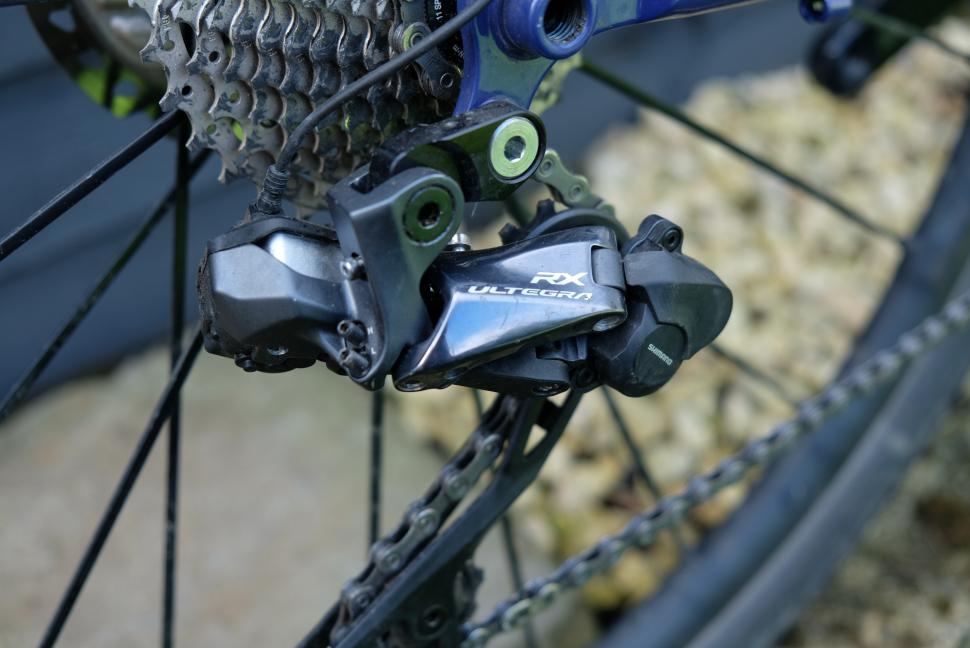
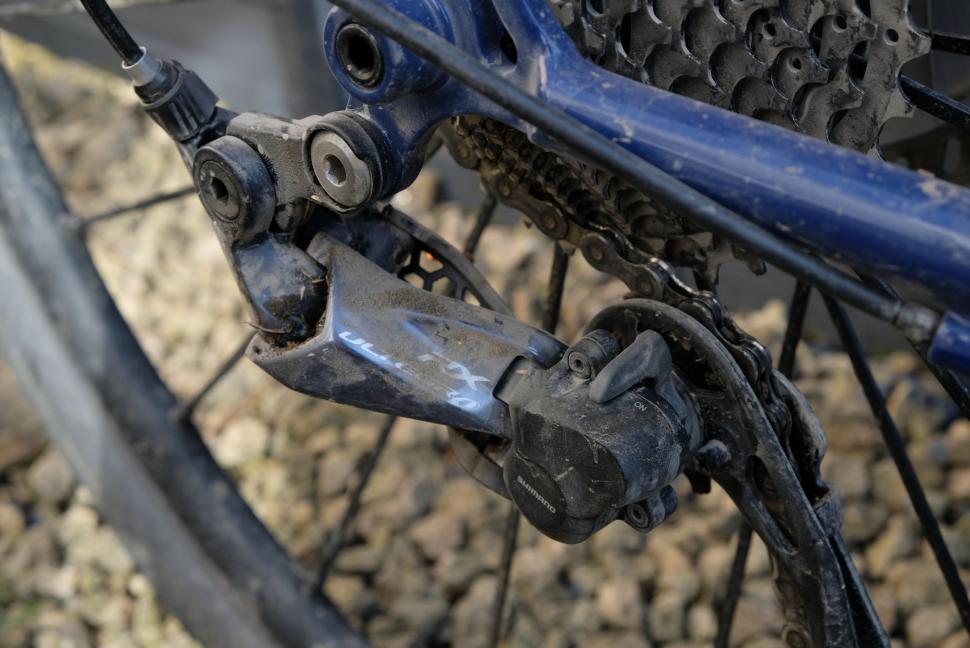
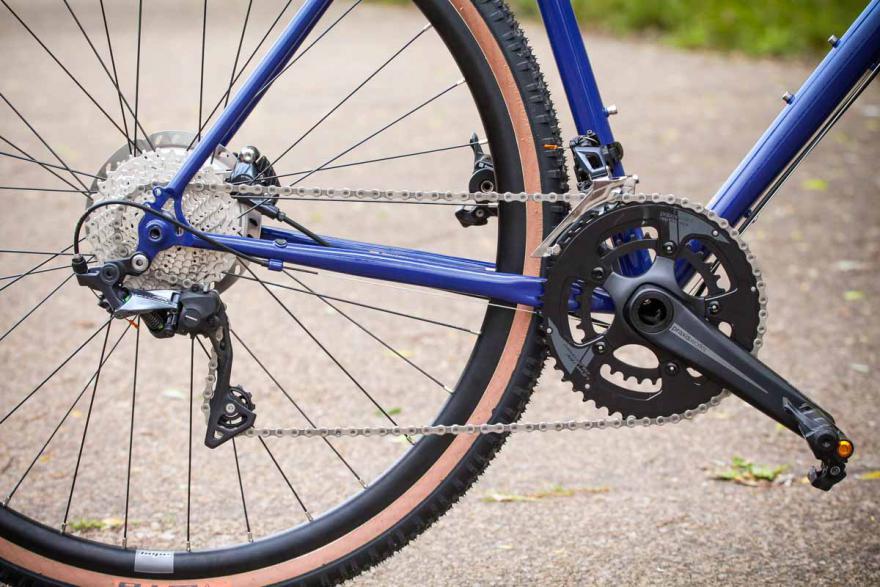

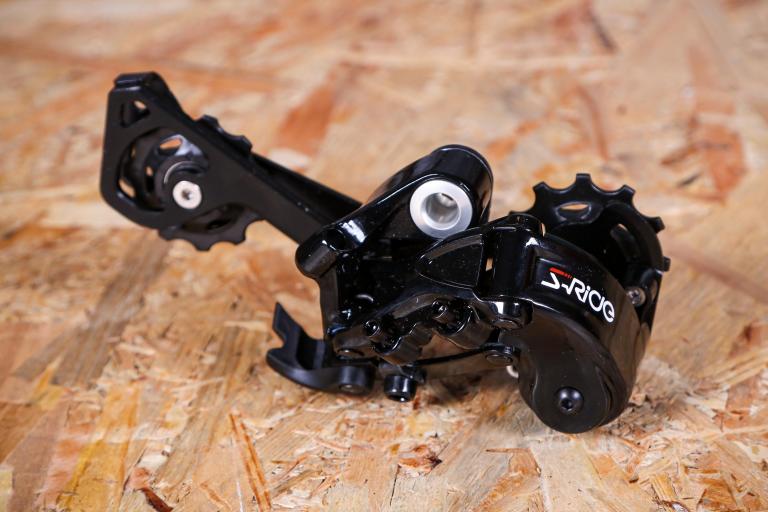

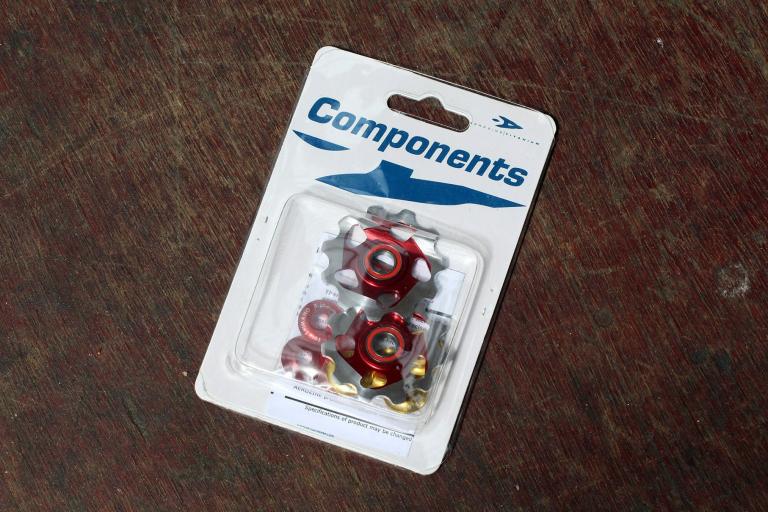
Add new comment
8 comments
Many thanks for your excellent review.
I read this review with great interest as I am just about to change the gear set up on my Roubaix. At present I have a standard compact with a 11-42 cassette, an XT (with clutch) rear derailleur which is interfaced to the Ultegra sti with a Wolf Tanpan pull ratio adjuster. This works reasonably well although, as indicated in the review, with the clutch engaged it does make the shifting heavier and, of coures, the Tanpan introduces some friction into the system
I am planning to go back to a standard Ultegra RD R8000 gs and a Wolf road link. I did consider using a RX 800 derailleur, with a clutch, but the review has persauded me otherwise.
Two observations on my set up: absolutly no cross changing; and on one occasion with the clutch off on the XT my chain dropped off the cassettee on a bit of rough road blasting down the Berwyns.
I love my XT Di2 rear derailleur with clutch. These will be ideal for all road bike setups. Shimano making off-road for road now, good.
Stops those clanging moments when going over rough surfaces. Lets face it, roads are terrible these days. Happy owner without scratched chainstay
Is the XT Di2 rear mech compatible with road shifters? If you want a 1x road setup with capacity for a bigger cassette than this offers, would you just be able to fit an XT mech? XT's available as 1x so surely that has the capacity to handle big cassettes.
I'm interested in an "adventure" bike that can take both 700c and 650b wheels, and I've been pondering if it would be possible to switch between two setups - a 2x11/700c "road" setup using Ultegra Di2 and 1x11/650b using an XT Di2 rear mech. You'd need to swap wheels, rear mech, chain and cranks, and take the front mech off (and tuck the wire out of the way somewhere), but if everything talked to each other properly it should be possible and give you a really adaptable bike.
Yes, XT Di2 mechs are compatible with road shifters, although I've only tried with a 2x set up, for which you must use an XT front mech.
Correct MTB(XT/XTR) Di2 derailleurs works with Di2 road shifters. XTR do a double front derailleur too.
You can also use the XTR with XT Di2 derailleurs. They are compatible.
I use the triple XTR Di2 front derailleur with XT rear.
The front derailleur allows me to use a 48/36/26 crank, which is far greater than what Shimano say it can run-they are wrong it works beautifully.
I then run either 11-32 or 11-40 cass on different wheelsets depending on what I'm doing
See here my bike gearing setup for a trip to the Canary islands
20180929_071807.jpg
Weird one this. Shimano have effectively introduced a competitor to sram rival 1, which is guaranteed to be nicer to use and be better engineered, but they have half done it, and you have to ghetto it a bit to actually make it worthwhile. As a 2x product with a subcompact gravel chainset, its probably outstanding, but again, shimano dont make a gravel chainset either. And they dont make a left hand hydro disc lever without shifter internals either. A brill upgrade though for most of the guys I know who race cross, and went 1x on their shimano 105/ultegra bikes, they have all been buying them like crazy.
I have the mechanical version set up 1x with an 11-40 cassette.
I've been really pleased with it so far. Shimano has a reputation for being very conservative with their recommendations, it seems to cope with the 40 tooth sprocket easily.
What size chainring are you running on the front? Im looking at doing a similar setup.